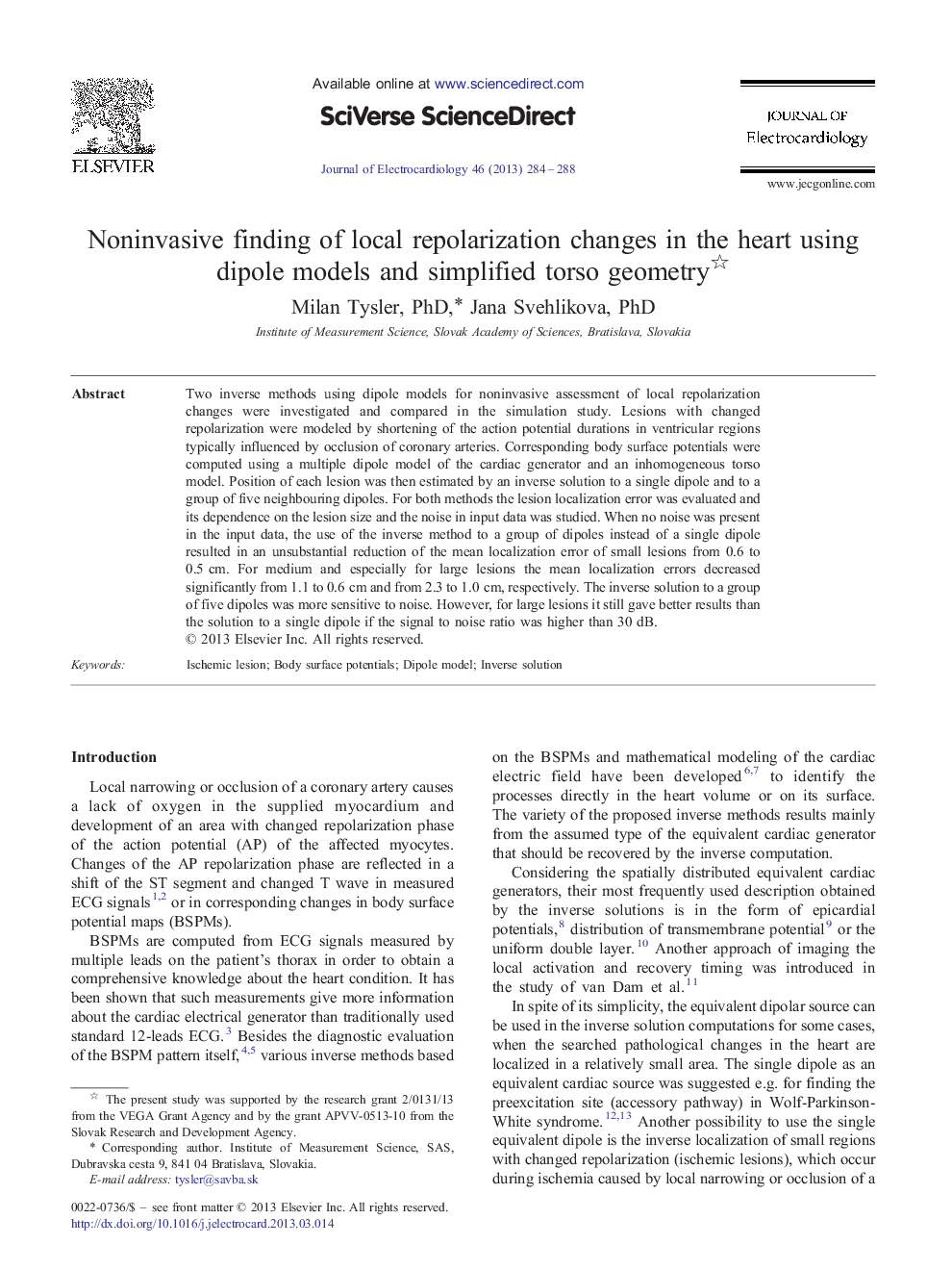| Article ID | Journal | Published Year | Pages | File Type |
|---|---|---|---|---|
| 2967851 | Journal of Electrocardiology | 2013 | 5 Pages |
Two inverse methods using dipole models for noninvasive assessment of local repolarization changes were investigated and compared in the simulation study. Lesions with changed repolarization were modeled by shortening of the action potential durations in ventricular regions typically influenced by occlusion of coronary arteries. Corresponding body surface potentials were computed using a multiple dipole model of the cardiac generator and an inhomogeneous torso model. Position of each lesion was then estimated by an inverse solution to a single dipole and to a group of five neighbouring dipoles. For both methods the lesion localization error was evaluated and its dependence on the lesion size and the noise in input data was studied. When no noise was present in the input data, the use of the inverse method to a group of dipoles instead of a single dipole resulted in an unsubstantial reduction of the mean localization error of small lesions from 0.6 to 0.5 cm. For medium and especially for large lesions the mean localization errors decreased significantly from 1.1 to 0.6 cm and from 2.3 to 1.0 cm, respectively. The inverse solution to a group of five dipoles was more sensitive to noise. However, for large lesions it still gave better results than the solution to a single dipole if the signal to noise ratio was higher than 30 dB.
